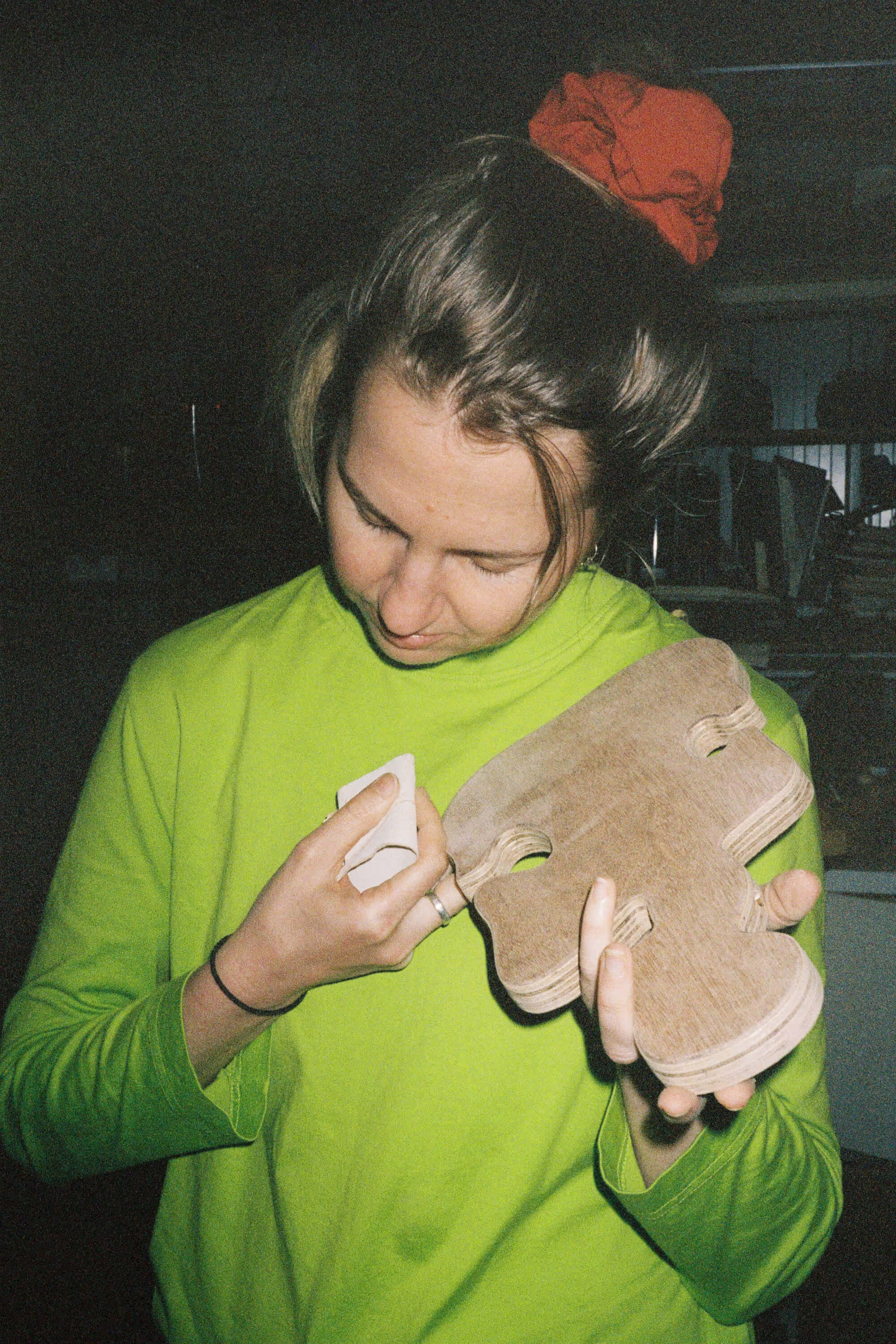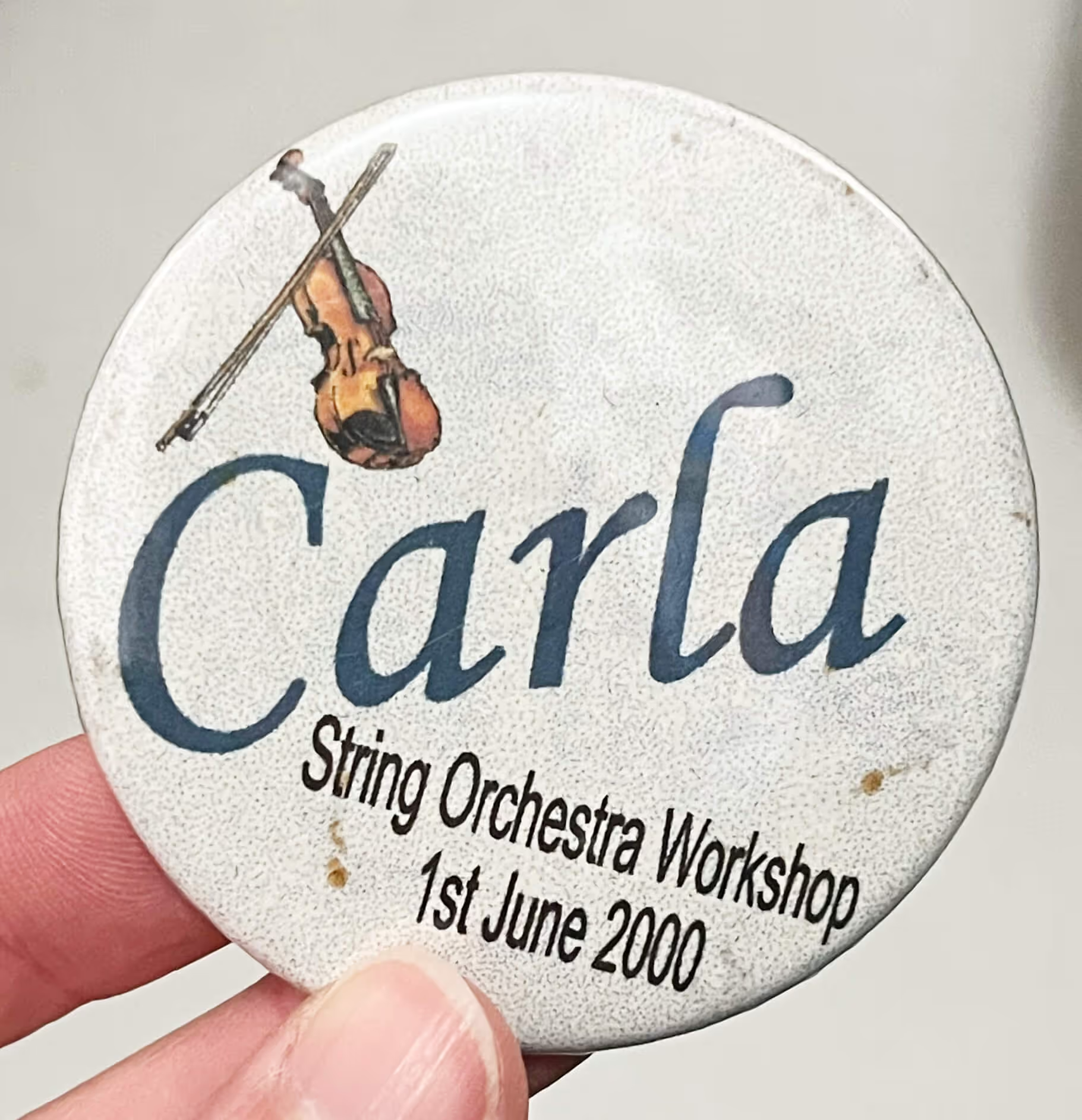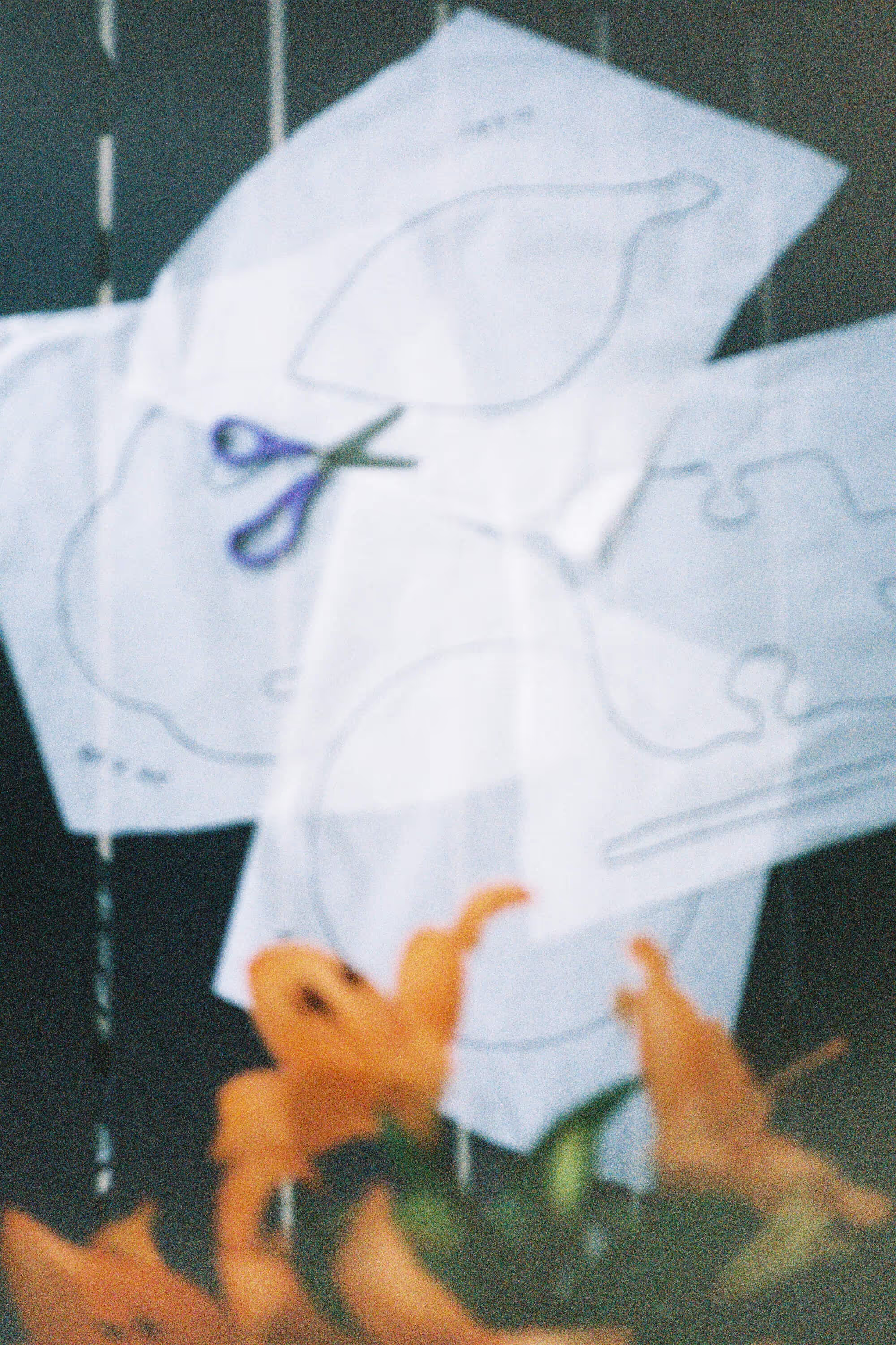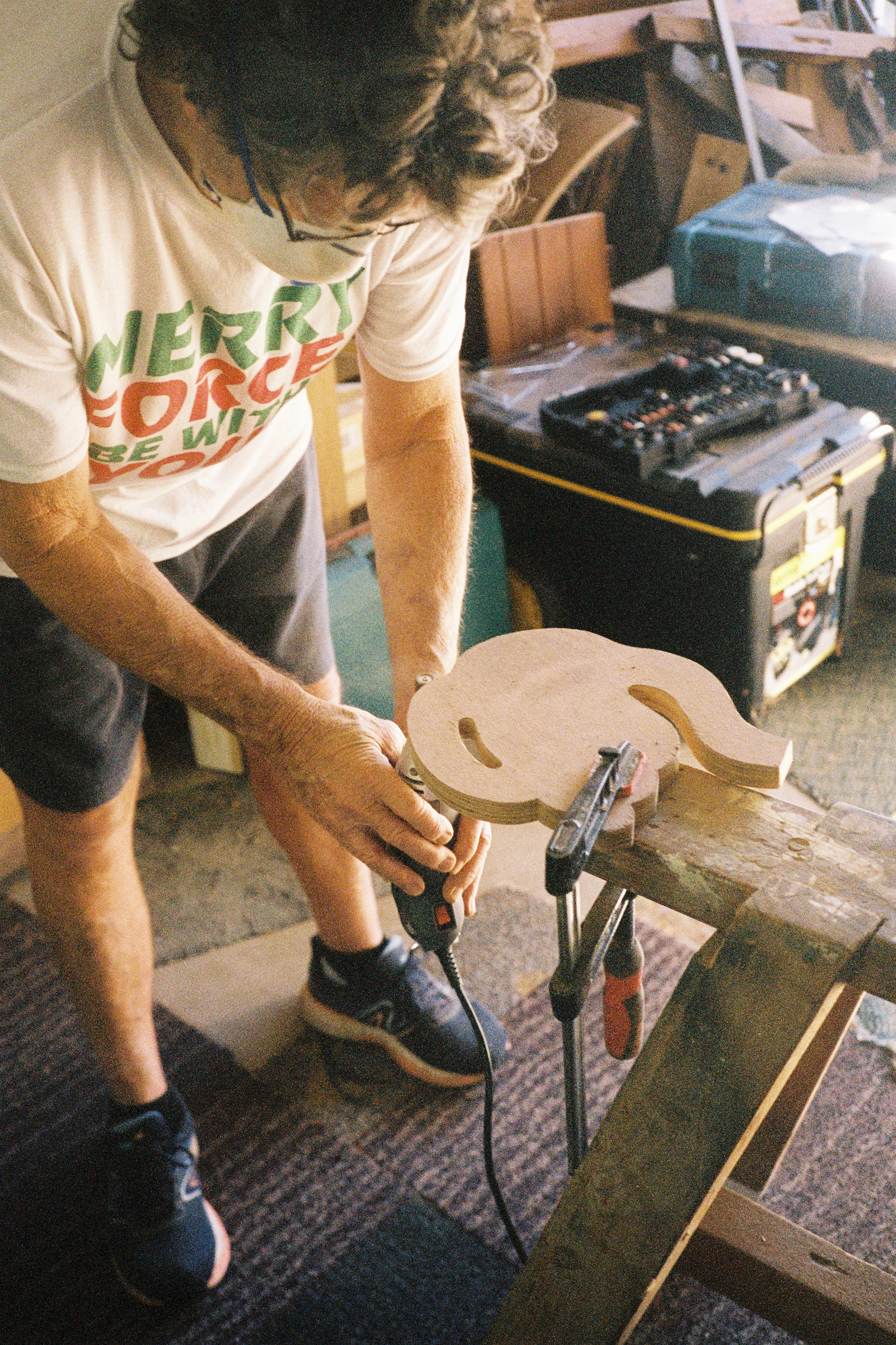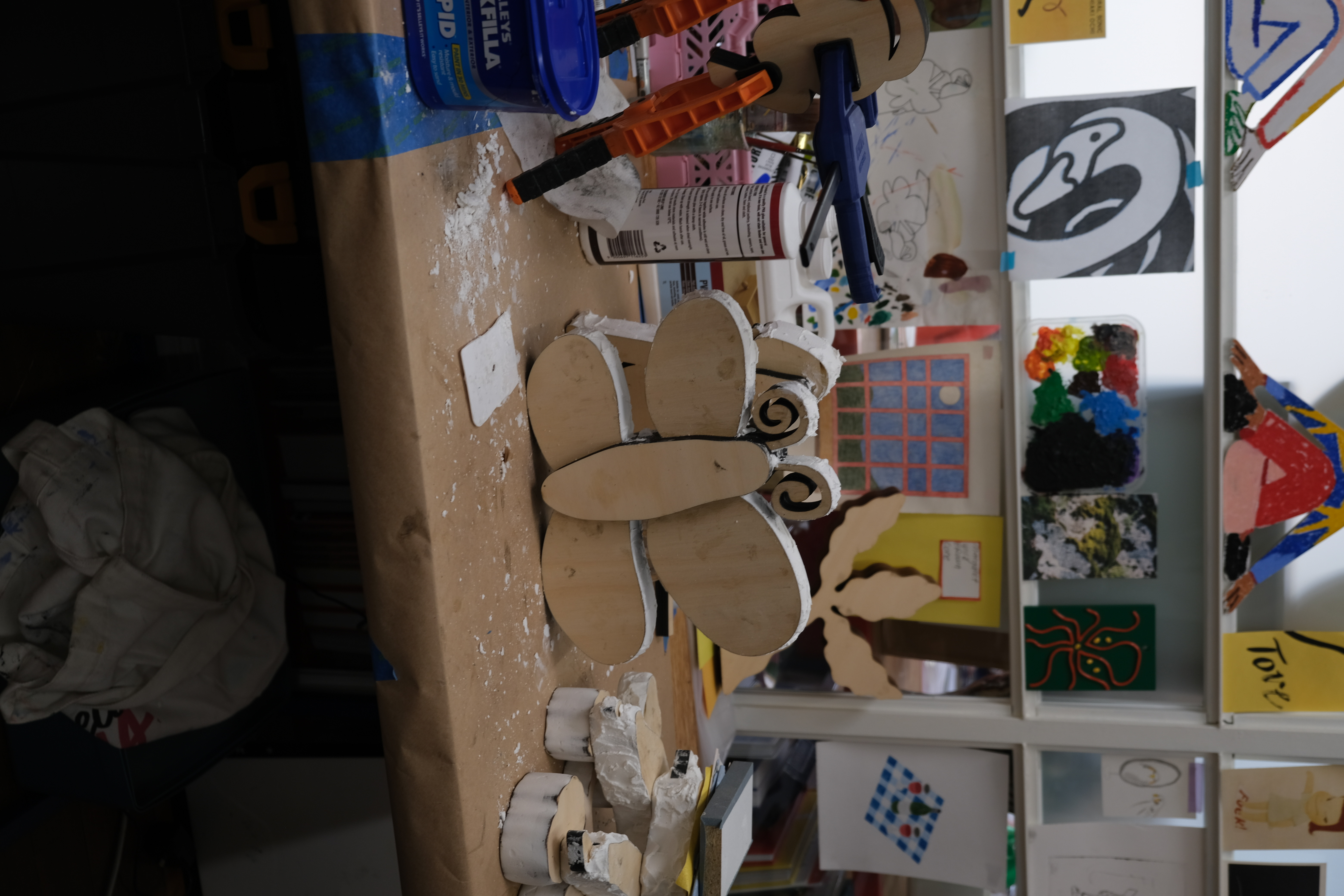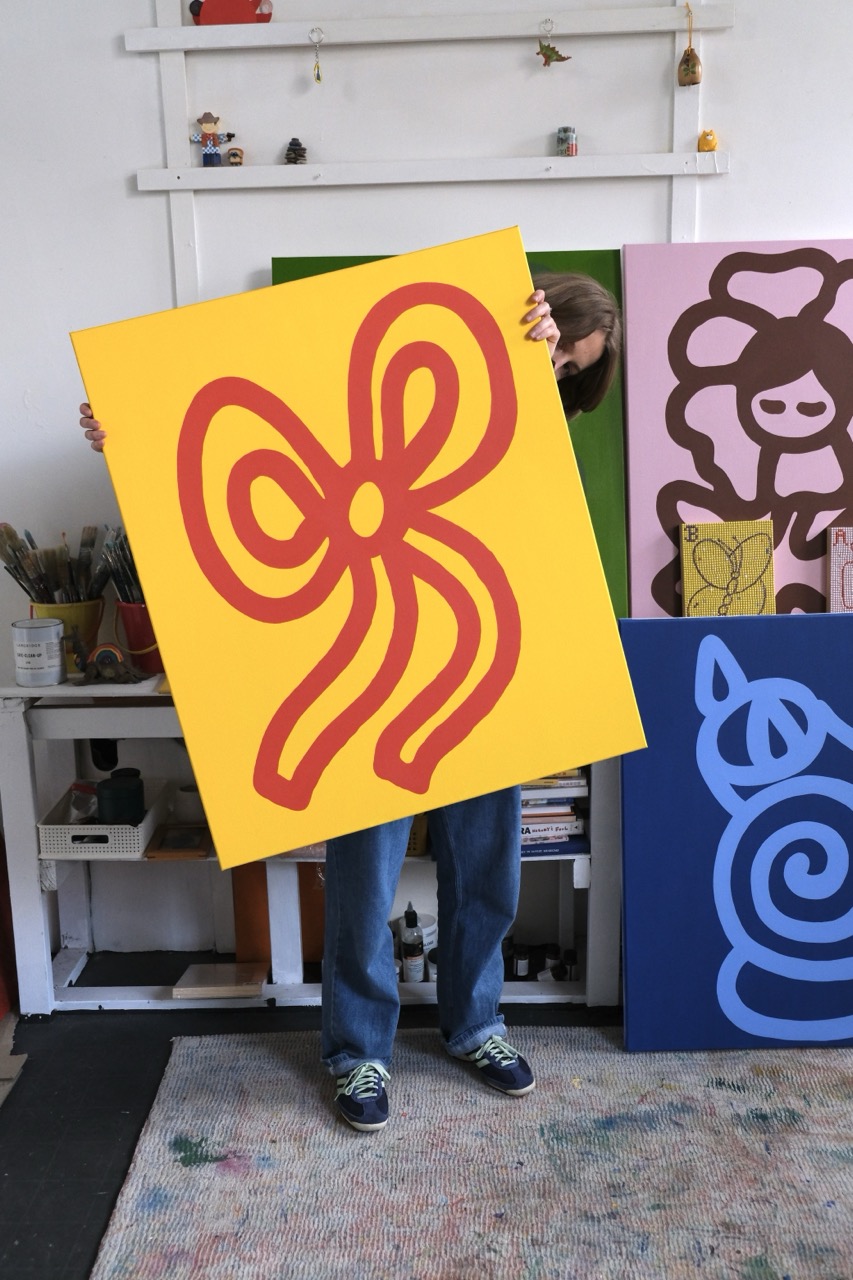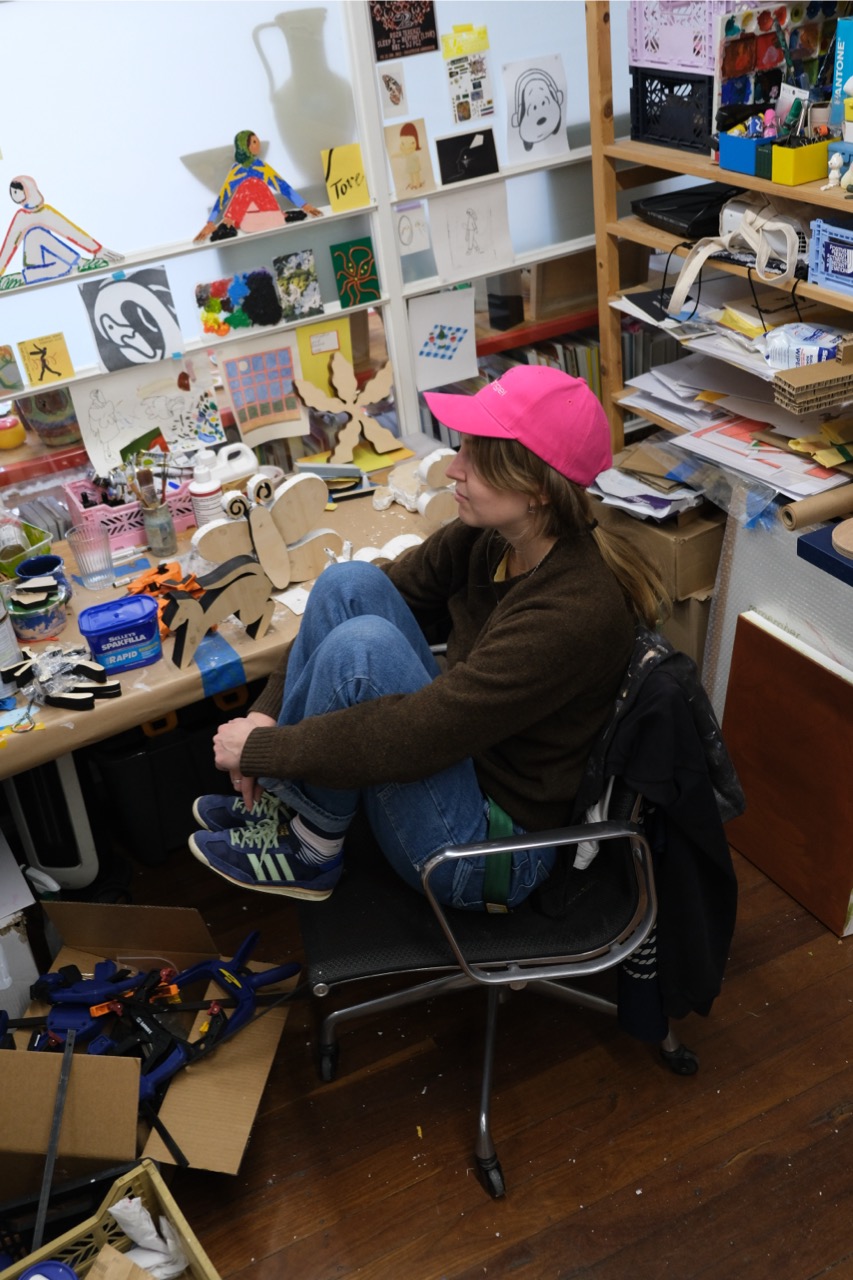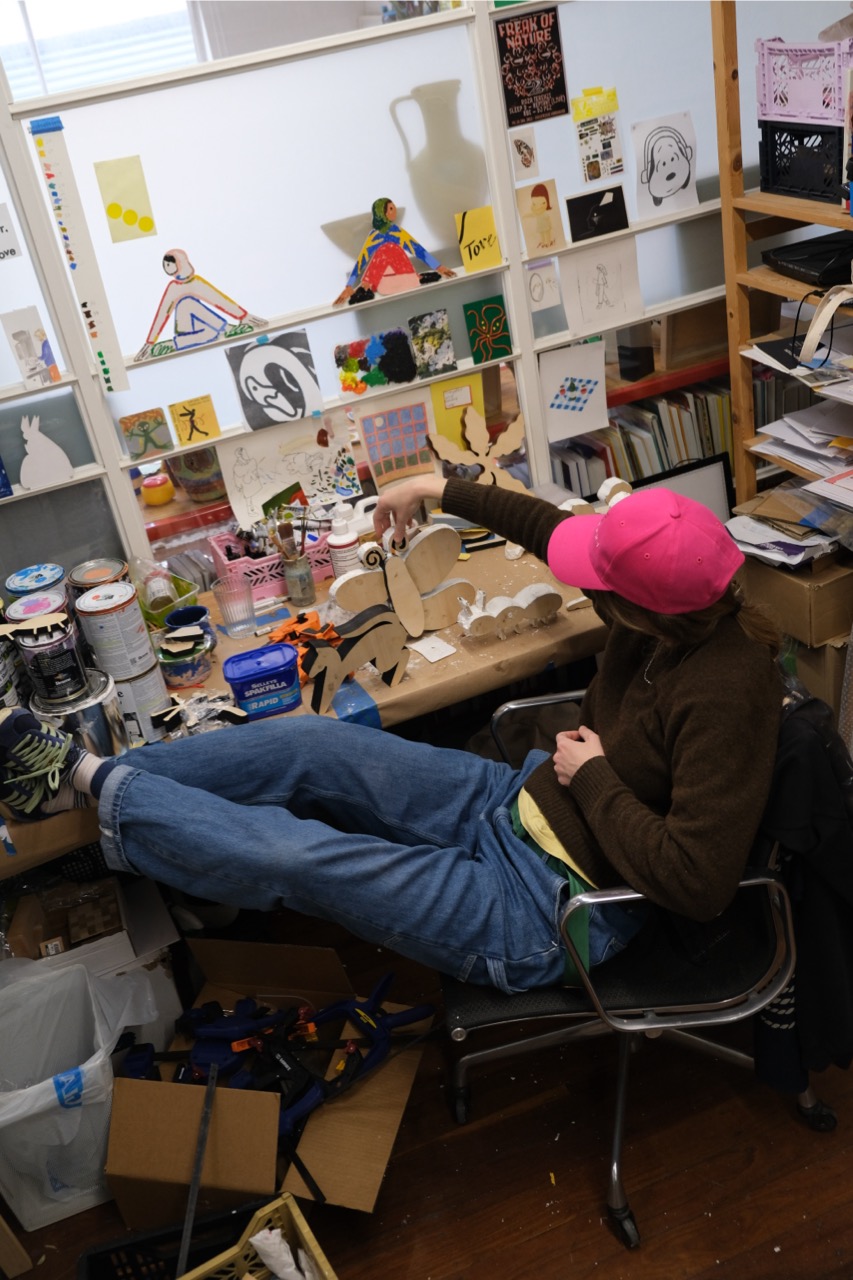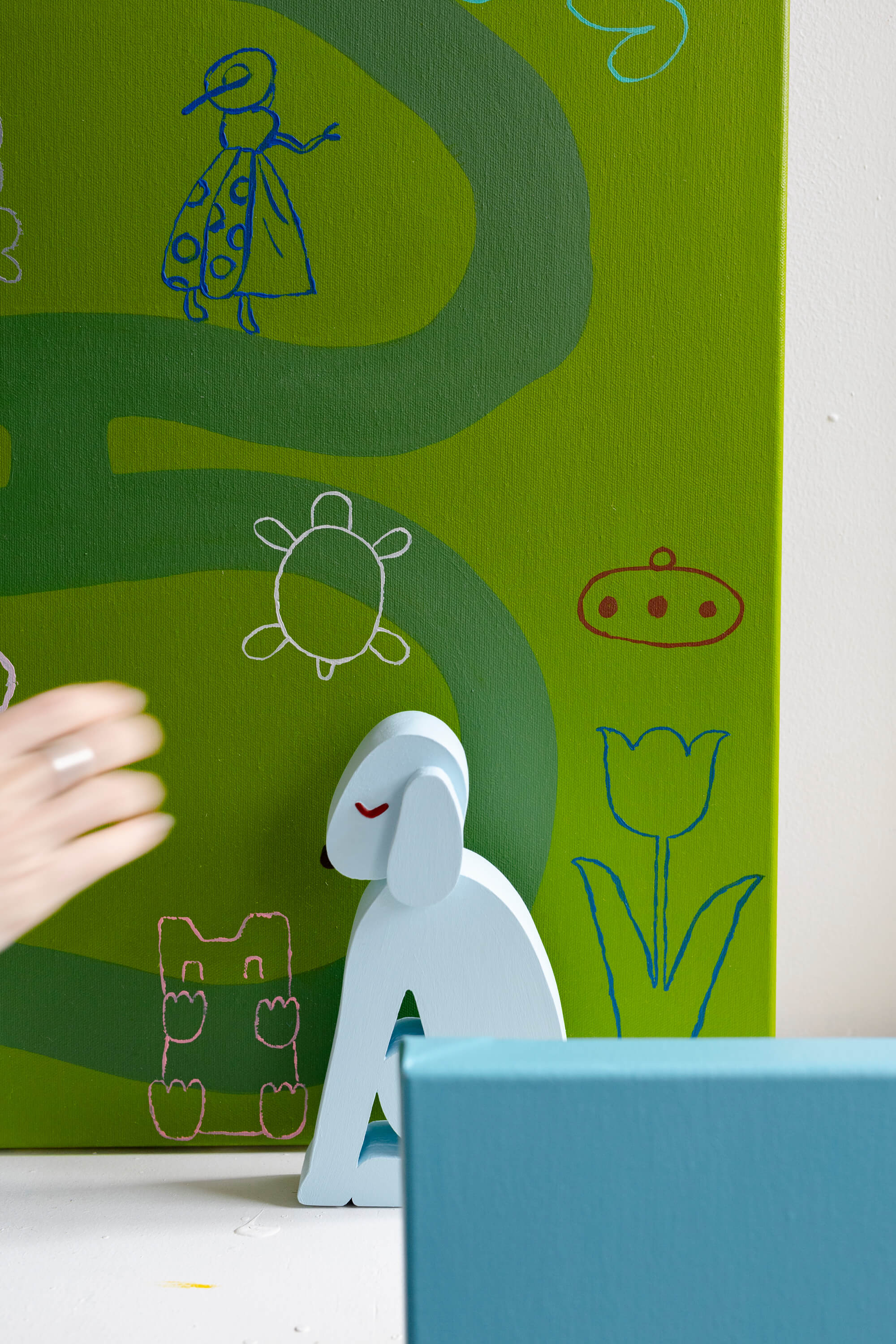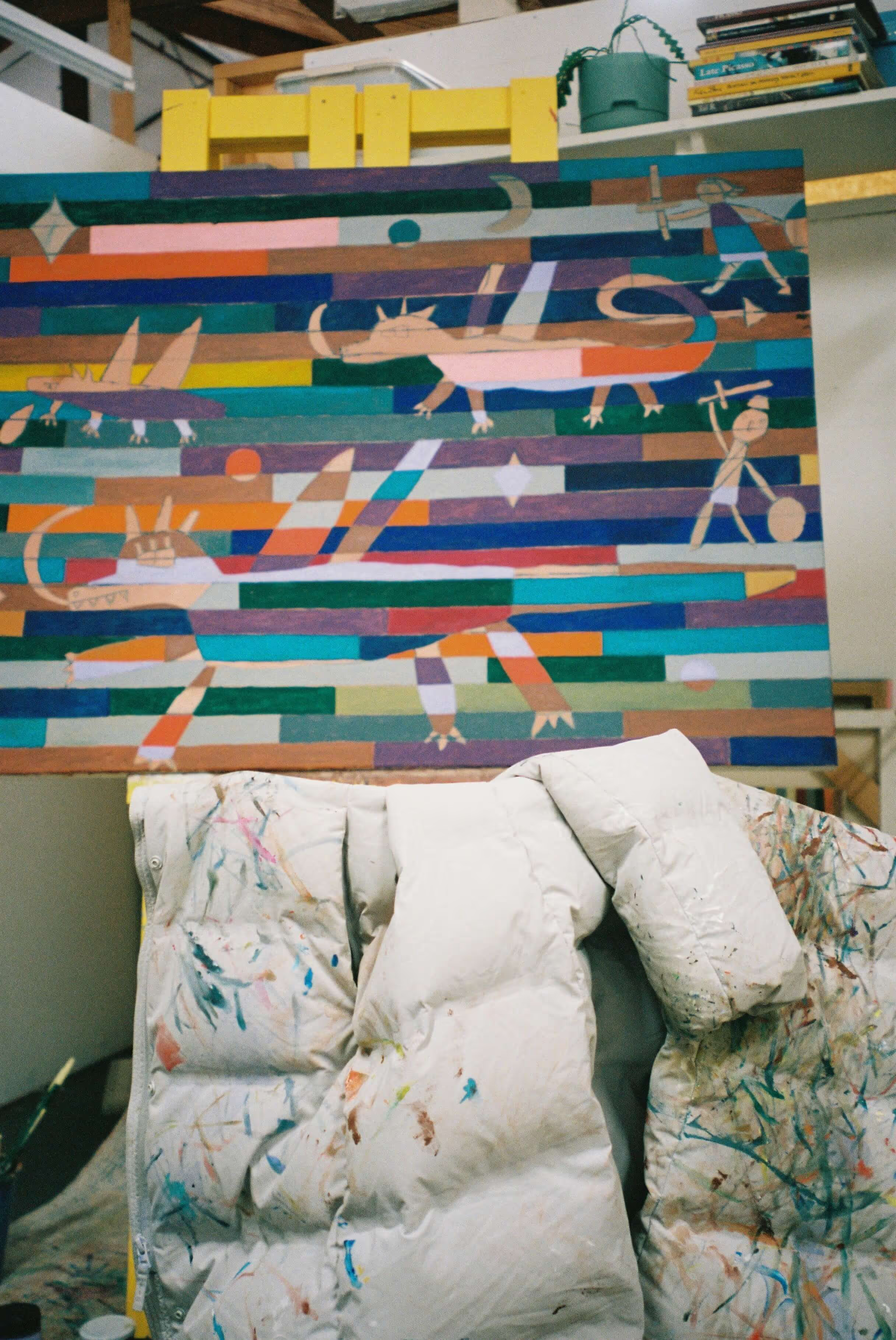When Carla and I decided to embark on a collaborative body of work, it felt full of unknowns—and glorious risk. Although our work had previously been placed side by side in Spring Time #5 at Backwoods Gallery, we were mostly strangers, connected only through the window of our respective practices. What ensued was a two-year-long conversation—about art, identity, childhood, the ways we aligned, and what set us apart.
The history of collaboration between women has been wildly undervalued and underestimated—and in many ways, this project felt like a small act of reclamation. It pushed back against the tired narratives of competition and isolation that still linger in the art world. What began as a fascination with Carla’s practice gradually uncovered for me - a deep admiration for the person behind the work. It was a delight to dive into the realm of Carla’s mind and art.
The process felt like we were quietly cheering on an invisible thread that connected us, now made visible through the work we created together. Our dialogue, our personalities, and our joy in sharing found purchase in the ways we borrowed, reworked, and blended each other’s visual language.
Looking back, I realise this show is a manifestation of a long, slow conversation expressed through form—and it’s made me more aware of the quiet, often unseen ways we are in collaboration with others.
In celebration of that - please enjoy this interview with Carla, and I hope that “Blooming and Buzzing Confusion” hits you right where you need it most.
Hi Carla! What is your first creative memory? What is your most potent and alive creative memory?
I have a memory of sitting at the kitchen table one morning, must have been about 6 years old, looking at a Kelloggs cereal box that had Space Jam characters on it. I was trying to draw Lola, thought she was so cool, but it wasn’t working out so I asked my big sister to draw her for me instead - watching that character come to life in front of me on the page, line by line, I remember having a deep yearning to draw better. Would love to see what that drawing looked like - to my child eyes it was perfection!
What came up for you in the process of collaboration for this show? Did the midway point of our practices feel compromising at all? Do you feel like limitations are an important part of creative exploration?
I think I felt the most nervous before we started putting pencil to paper. We had a really long period of just chatting about the show, sharing references and throwing ideas around, which was so fun but of course being in this ambiguous stage for too long can start to feel a bit frightening. We took a risk, not even knowing if we could work well together - just bouncing off pure intentions and blind faith!
The day that we put drop sheets down and started playing together was actually such a relief, because around the sloppy stuff we were making off-the-cuff, we did get into a rhythm relatively fast and those first collaborate painting sketches on paper that came out felt like such a revelation. That shared rush of adrenaline, like, “ok we solved the first part of this puzzle, this makes sense and we can work together”. And all that time talking and getting to know our processes and anxieties really helped to push us into this space of being prepared and ready to work with each other in a gentle, caring way..
The paintings in particular have been quite a challenge, haven’t they! You and I have both spoken of feeling like we’re only “half doing” our work, like half the brain is missing or something, but I think the discomfort of stopping halfway so we can meet each other in the middle is actually so healthy. Those paintings hold a lot of tension and energy because of their novelty and newness for us.
Also, just as we began making the work for this show, my mum became really unwell so I’ve spent most of the past few months in QLD, caring for her and supporting my family, ducking back down to Melbourne for short and intensive periods of work. That we’ve been able to carry on and continue to work with relative fluidity throughout that time really speaks to safety and trust of that shared frequency that we found to sit in together.
As for limitations, I love them - they push me creatively and impose a kind of resourcefulness that can be really productive and helpful. For example, a few years ago I wanted to start exploring wooden sculpture for a project but I have basically no woodworking skills. I do, however, have the ability to create vector artwork and leaned into that skillset develop a process using laser cuts. Another example is with murals - they impose all kinds of time, budget and physical limitations, which then affect colour use, detail and techniques achievable. It sounds incredibly basic to say out loud but embracing restriction has pushed my work into a more refined space than if I never had to impose these limitations. Having no limits is overwhelming.
How did it feel sharing your practice with me to reinterpret and play with? It’s quite vulnerable to let one peer into your sketchbook alone!
Getting to know each other through sharing our sketchbooks and references felt like showing each other a little part of our soul. My sketchbooks are a mess, sometimes more text than drawing and I found myself wanting to explain, probably too much. Once I got over this initial self consciousness, it felt liberating giving my drawings over to you to interpret as you wished. There is a freedom in letting go of the existing context and letting someone else find their own meaning in the work. It was a good reminder again that despite having your own meanings embedded in your work, someone else will always project their own onto it - I love the generosity that a drawing can have.
Is there a studio routine which feels sacred to you that you could share?
More simple than sacred, if I have a hot drink and headphone,. I can pretty go deep anywhere. Often I will put my headphones on and forget to hit play and realise I’ve been working in silence for hours. If I’m in concept mode or hashing out illustration concepts, I need music without lyrics, usually some form of electronic / ambient / downtempo mix to guide me into a deeper wormhole. For execution, I can move onto something with lyrics or more chatter. Also I have pavlov’s dog’d my brain into snapping into deep mode the moment I hear the Aphex Twin song Xtal. It’s a good one to hit the emergency button on when I can’t focus. That song has saved me many times.
Do you feel as though your work is ever misrepresented? If so - have those misrepresentations felt personal to your experience of self?
Well, if anything I feel like I misrepresent myself all the time! I never quite get to the absolute crux of what I’m trying to express in my work, there’s always a thread loose to keep me trying again. Maybe this is reflective of the journey of trying to know myself in general.
Have the ways in which people respond to your work ever impacted your relationship to it?
Negativity always settle much deeper in the psyche. I often feel a bit disconnected from responses to my work until I am physically standing next to it. I’ve had plenty of positive feedback over the years but also have had everything from old dudes telling me my work is a waste of taxpayers money, to disbelief at being a woman installing large work in public (another old dude) and some odd experiences installing at an institution. I am used to taking critical feedback in my freelance work, but it’s different when it’s to your face, in public. I have gone through periods of feeling like my voice is not necessary, that I’m not saying enough, that I have taken up too much space. But then I get angry and think, fuck it. Whose recognition and feedback do I really value? As time goes on and I learn more about the power systems that uphold our institutions I see less reasons to seek their approval. If anything, these experiences remind me not to ever assume that work will be embraced or valued. And that is ok. I try to make work that can be accessed by and speak to a broad spectrum of people. I don’t think it’s particularly hard to decipher or understand — its accessibility can be read as simplistic, which becomes a problem for me.
In which way has your practice or your approach to it changed over the last year?
I’ve been trying to loosen up and trust myself more, to accept the unease as part of the job. I have never been very strategic about what I’m doing, I mostly just follow my instincts. One of my insecurities over the years has been that I feel like my work hovers at the borders of industries. My chips are scattered all over the place! Despite, or maybe because of this, I have been lucky to be freelancing as an artist/illustrator full-time for over a decade now - being resourceful and multidisciplinary is a big factor in this being possible. My skillset which has been cultivated through my curiosity, my community, some fluidity and flexibility and DIY spirit, has allowed me to carve out this diverse, multifaceted practice that can sustain me, for now anyway. I’m incredibly lucky and grateful, I could have never imagined I would have a life like this as a kid.
What’s your vote - should we look at art without context or should artwork accompany an explanation or insight of some sort?
It depends on the work!
When making art is tough and full of adversity - what brings you back to it?
I get tired for sure, and experience extended periods of feeling blocked. Eventually the spontaneity of a beautiful line, that urgent ‘struck-by-lightening’ gut response of having a good idea or a work finally clicking, brings me back to the magic and mystery of drawing and making work. It is instant redemption. Also this process is so deep a part of me and the way that I process the world, I have been doing versions of it since I was a child. It is an innate part of me, and so when I’m lost for some periods, I eventually find my way back to it, and to myself.
Why is it important for you to explore such range within your practice? I am always in marvel about your ability to translate the essence of your work to murals, a full range of commercial projects, digital and physical works. To me that indicates a deep sense of self trust and exploration - does it feel this way to you?
I enjoy trying something new on the off chance that it will work out - the satisfaction of surprising or impressing yourself is addictive. I get bored with using the same mediums all the time and I like a challenge, keeping things a bit mysterious for myself. All the different mediums influence one another, which has a bit of a propelling effect. When I work hard in one area for a while and expand my skills, it changes the way I approach other facets of my practice. I also don’t find it helpful to draw solid lines between what is commercial and what is personal work - I put the same amount of effort in, every project has me in it regardless of the outcome. It’s all drawing on my experiences, my references, my interests.
Can you give us your top 5 studio snacks for those in the know and why snacks are a repeat motif in your work? for more studio snack content, check out Carla’s snack gram.
At the moment:
1. A perfect mid-season mandarin
2. The butt-ends of a bread loaf toasted with cheese and tomato chutney
3. Banana with a spoonful of nut butter between bites
4. Stick of cheese dipped in hummus
5. A beer halved with a studio mate
Life is weather, life is meals and little snacks are one of the deepest pleasures of this life.
Agnes Varda says it best in this video here.
Are there any prominent narratives in your life that have allowed you to thrive? Are there any which have held you back?
Maybe a bit of a cliche, but I think being from a small place (regional Queensland) and moving to a big place (Melbourne) is a narrative that has both held me back and set me free at various times.
You can pick only one colour to wear for a year - what would it be?
At the moment, green. All different shades of green.
What’s one recommendation you would give to us all today?
Basic but applies to pretty much everything and I have to remind myself all the time — when you’re stuck, just start.
for more of Carla’s universe head here <3



